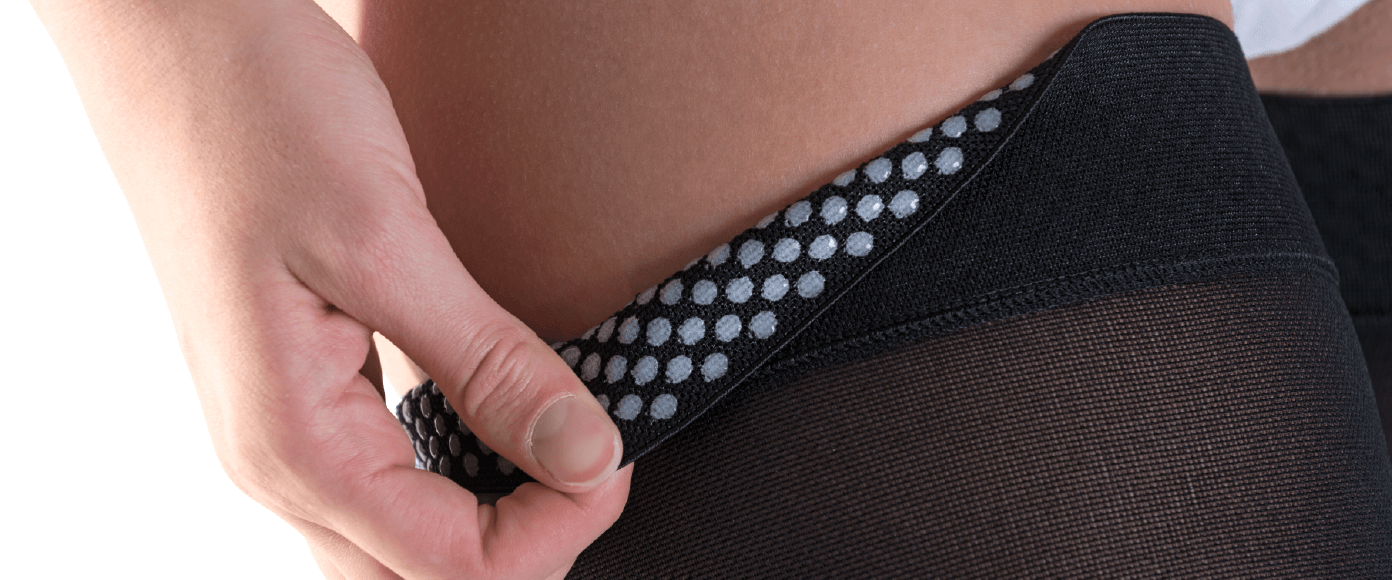
How Compression Works
Compression therapy is based on the simple and efficient technique of applying pressure around the leg. Graduated compression (strongest at the ankle and decreasing going up the leg) assists the calf muscles to perform their pumping action more efficiently to return blood to the heart. With the right pressure, the stretched vein walls are gently squeezed together, allowing the valves to close, aiding overall circulation.Compression is measured in millimetres of mercury (mmMG) and relates to the amount of sub-bandage pressure being applied. Therapeutic compression stockings are often grouped into the following grades depending on their mmHG content:
Class I: 18mmHG -21mmHG
Class II: 23mmHG-32mmHG
Class III: 34mmHG-46mmHG
When Is Compression Therapy Important?
Low to mild levels of compression (Class I and II) are remarkably effective in managing:- varicose veins
- spider veins after sclerotherapy treatment
- patients with ‘tired legs’ or pigmentation due to venous disease
- healing venous ulcers
- preventing blood clot formation following major surgeries
- management of lymphedema
- patients with a first episode of Deep Vein Thrombosis (DVT). They can reduce the likelihood of post-thrombotic syndrome (a common complication arising from DVT) by 50%
- during pregnancy to prevent excessive ankle swelling (oedema)
- in lowering the risk of DVT in those at high risk. This includes diabetics given their increased risk of circulatory problems and those undertaking long-haul flights (> 4 hours)
Can I Stop Compression Stockings Before My Doctor Instructs?
Not if you want to achieve optimal medical and cosmetic benefits! Patient research has shown that:- wearing Class II compression stockings for three weeks improves the effectiveness of sclerotherapy treatment of spider veins by improving clinical vessel disappearance
- using stockings for the entire day produces less ankle swelling compared to use for a half day or not at all
What Other Types of Compression Therapy Are Available?
Compression therapy can also be applied via bandages or in certain circumstances intermittent pneumatic compression (through a sealed chamber around the limb). However the advantage of stockings over bandages is that you can be confident the correct pressure is applied.Commonly Used Stocking Types
|
Anti-embolism |
Worn when bed-ridden or post-surgically to help prevent pooling of blood in the legs that could lead to a venous thrombosis. |
|
Custom |
Uniquely made for a specific individual. |
|
Circular Knit |
Seamless stockings that are more stylish/attractive. |
|
Flat Knit |
Stockings made with a seam that can be constructed in virtually any shape or size. Most often used in higher compression classes. |
|
Silver |
Stockings constructed using special silver textile fibers, offering natural anti-microbial protection. |
|
Lymphedema |
Mild compression stockings sold over-the-counter and without a doctor’s prescription. |
|
Support |
Mild compression stockings sold over-the-counter and without a doctor’s prescription. |









